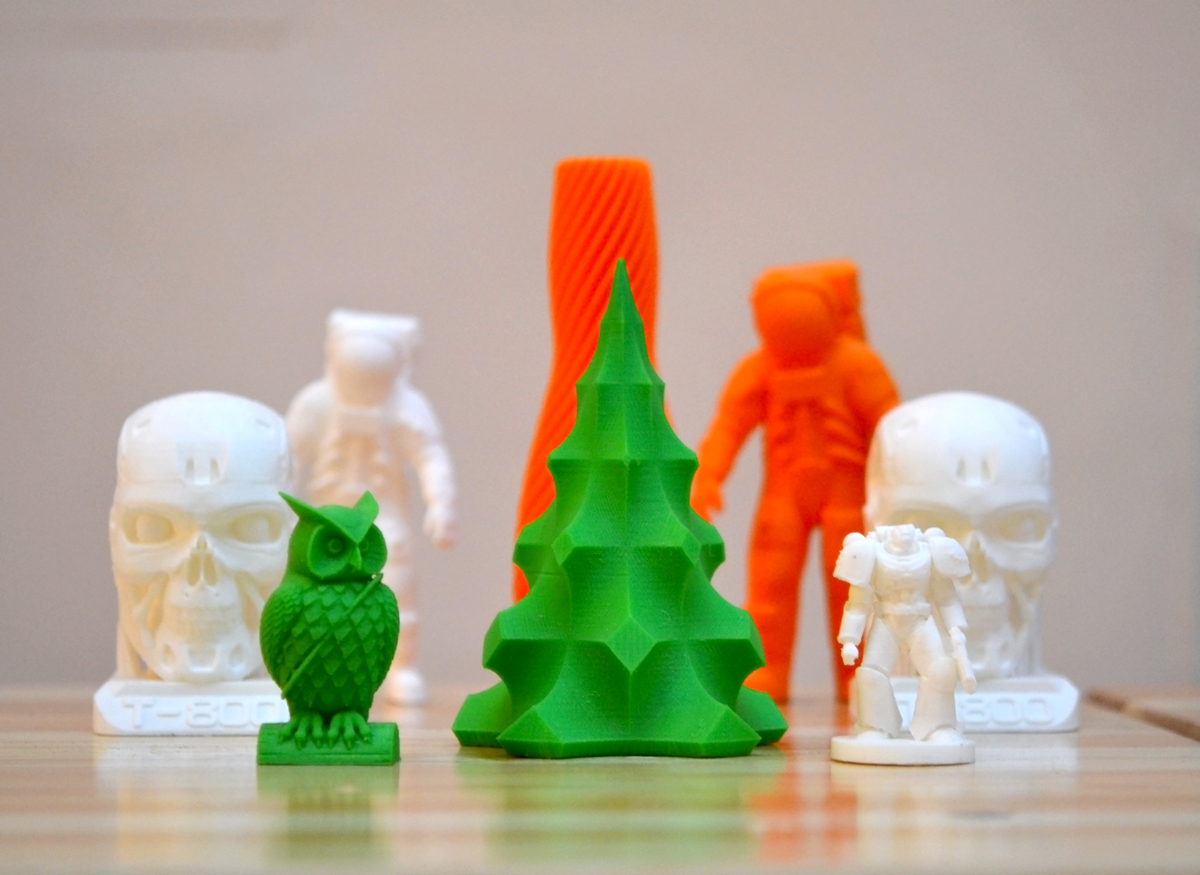The sign industry has seen its fair share of technological upheaval. For example, after several centuries of brush and spray signwork, the 1990’s arrival of vinyl cutters and easy-to-use sign software allowed virtually anyone to become a signmaker. Soon after, digital printing machines and photo editing software transformed the monochrome world of vinyl cutting into the vibrantly colored digital print world we know today. So, is 3D printing the newest wave to hit the sign industry? Is it industry-altering technology?
Most 3D printers are fairly simple machines. Essentially, they comprise an XY carriage, a Z platform and a printhead. The printhead can be a heated nozzle that extrudes melted plastic, or a laser that can either solidify liquid resin or fuse powdered metal into a finished part. The XY carriage positions the head and a drop of plastic or a laser burst is emitted. The Z platform lowers for the next pass as the part is built up. Printer prices range from a few hundred bucks up to six figures, and they are cool – but the question remains: What good is 3D printing to a signshop?
Before exploring that question, let’s look at the workflow for producing a 3D object via a printer that works with plastic filament. Our imagined job is a sign that requires a dimensional version of the client’s logo. The client has provided high-quality logo artwork that you scan and transfer into an X, Y and Z program that converts the 2D artwork into commands that form a 3D object. With the artwork converted into a 3D printable format (typically .stl), the file moves to software (commonly called a slicer) that prepares and sends a print code to the deposition stage, which will convert the build material (machine-type designated) into slice commands that the printer tracks and layers, one material layer on top of the other. This action builds up the printed object. Once the layering process is in action, you can sit back and relax (or, do your normal job) because some machines take hours to complete a print. Processing time depends on the material, resolution and your choice of selected fill. Once finished, the part may need sanding and painting to finish.
Does this seem like a lot of work? That depends on many things – machine type, object size, and required finishing – but the real question is will it add significant value to the sign?
DRAWBACKS

In addition to time, another detrimental aspect is, presently, the finishing step for 3D objects that can be more time-consuming, but printers exist that can produce objects in full color. This class of printers, especially those with extra features, is costly, but if the prints add significant value to your finished signs (think investment cost, time and market demand), then one could be worth the investment.
Advertisement
Another limitation is object size. A low-priced but effective printer may be able to produce an 8-cubic-in. object, and you can segment designs into parts and assemble them, but such fabrication adds more time and complexity. If you are willing to invest the money, large-format printers are available that produce objects up to 7-ft. high, but expect to invest heavily in such a system. Still, we are seeing a few signmakers explore the market.
Another consideration is that your 3D printer may be used to create dimensional logos, lettering or symbols, as well as to produce the hardware commonly used to make signs: Handles, hinges and legs for A-frames are examples. Also, enclosures for electronics and wiring harnesses and other coverings can be fabricated.
Back to our original question – will 3D printing work in the signshop? We believe it will eventually arrive in force, but for now, there are a few pieces missing. While vast 3D libraries exist today (see thingiverse.com) sign-specific 3D clipart libraries need to be created. In addition, mounting hardware companies could license 3D fabrication libraries so that shipping times and customization can be minimized. Our summary is that printing 3D objects takes significant skills and time, which can be costly, but ready-made designs and more intuitive software will ultimately get signmakers involved.



 Tip Sheet1 week ago
Tip Sheet1 week ago
 Ask Signs of the Times2 days ago
Ask Signs of the Times2 days ago
 Real Deal1 week ago
Real Deal1 week ago
 Benchmarks4 days ago
Benchmarks4 days ago
 Editor's Note2 weeks ago
Editor's Note2 weeks ago
 Women in Signs1 week ago
Women in Signs1 week ago
 Photo Gallery6 days ago
Photo Gallery6 days ago
 Product Buying + Technology2 weeks ago
Product Buying + Technology2 weeks ago










